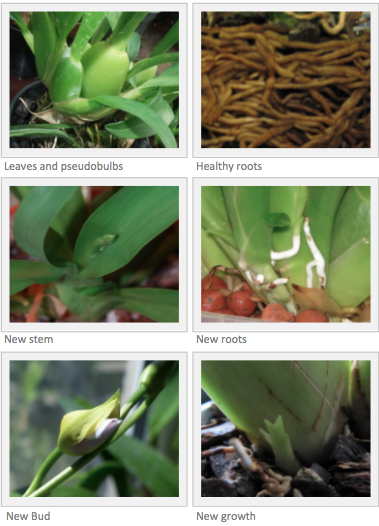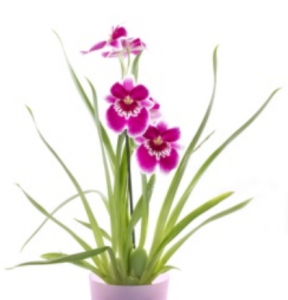+ Spanish
Miltonia is a genus with just 9 species, all native to Brazil. Before, the species now recategorized into the genus Miltoniopsis used to be part of it. The plants can be as high as 20 inches. The stems form from the young pseudobulbs. They produce big flowers that last from 15 to 60 days.
The genus Miltoniopsis, also known as Pansy Orchid because it’s flowers resemble those of the Pansy plant. It has 5 species, native to Costa Rica, Panama, Venezuela, Ecuador and Colombia. This genus was created when some differences between species of both genus where found: they have one leaf pseudobulbs and a different column.
knowing your orchid:

general care:
 WATER: both genus like to stay slightly humid. It’s important to water them only in the mornings with room temperature water so that the leaves and new growths have time to dry before the temperature drops in the evening. Excess water can be a focus of infection and can damage the plant. The frequency of waterings will depend on your climate and the time of the year; waterings should be more frequent and abundant during the hot months and if your climate is dry, you may need to water up to 3 times a week, fertilizing only once a week. During the winter and in cold zones, the watering and the feedings can be spaced every 7 to 10 days to avoid root rot. It will also depend on the type of media you’re growing them in.
WATER: both genus like to stay slightly humid. It’s important to water them only in the mornings with room temperature water so that the leaves and new growths have time to dry before the temperature drops in the evening. Excess water can be a focus of infection and can damage the plant. The frequency of waterings will depend on your climate and the time of the year; waterings should be more frequent and abundant during the hot months and if your climate is dry, you may need to water up to 3 times a week, fertilizing only once a week. During the winter and in cold zones, the watering and the feedings can be spaced every 7 to 10 days to avoid root rot. It will also depend on the type of media you’re growing them in.
RELATIVE HUMIDITY:
60% – 70%.
These are intermediate temperature orchids, but they NEED very high levels of humidity. Be sure to provide it. If your HR is to high, it’s very important to have good ventilation to prevent diseases. To increase your HR, please visit our post “Tips to increase Relative Humidity“.
Día: 68ºC – 80ºC
Noche: 55ºC – 65ºC
It’s ideal that there is a difference of 15ºF to 20ºF between day and night temperatures to promote new growths (leaves, stems and roots). If your temperature is higher that the ideal, you’ll have to increase the RH, airing and waterings, to avoid premature withering of the flowers and buds and the dehydration of your plant.

LOW TO MEDIUM LIGHT: Using the Shadow Trick (see Basic Care: Light Issues section), the shadow from your hand should be very light grey, almost imperceptible (low light) or a light grey not completely defined (medium light); if the shadow is darker, that spot is not for this orchid. NEVER IN DIRECT SUNLIGHT!! Ideal locations: east or south facing windows with a sheer curtain.
These are the IDEAL conditions, however, orchids are more adaptable than we think!! You’ll just have to put a bit more effort accommodating them in their new environment. Look for tips in our Magazine!
to know more about nutrition, growing media and basic care, click below:




